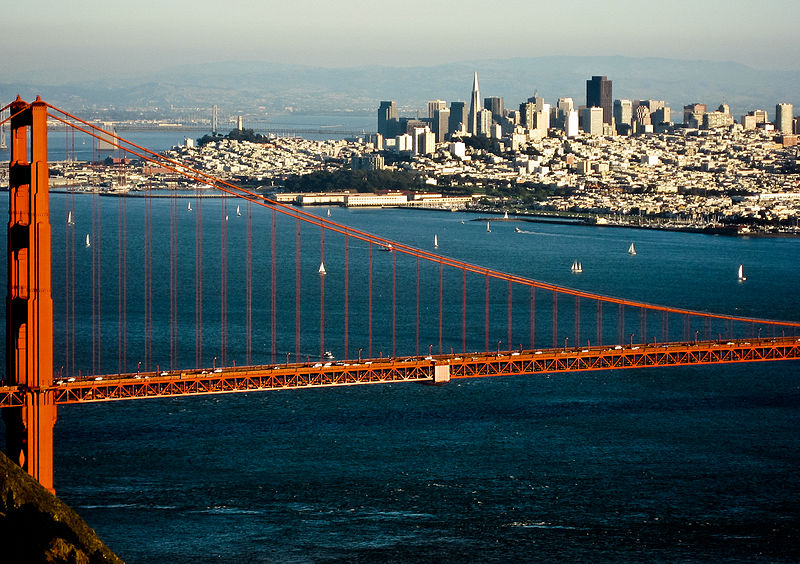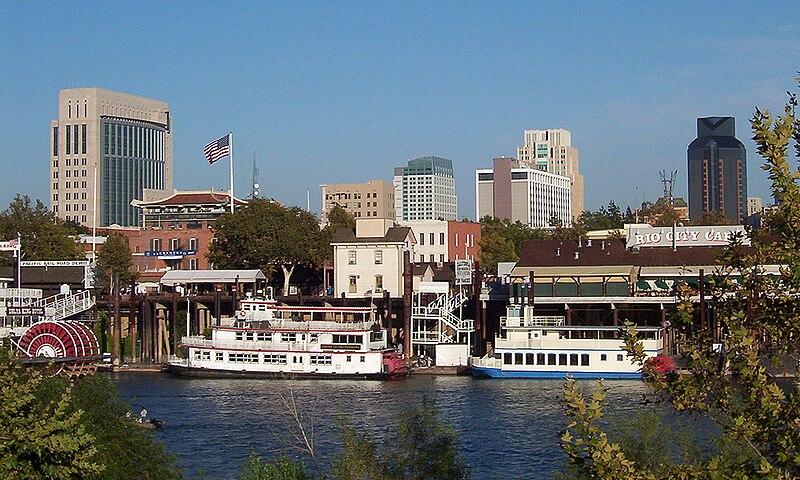
Northern California is the northern portion of the U.S. state of California. The San Francisco Bay Area (which includes the cities of San Francisco, Oakland, and the largest city of the region, San Jose), and Sacramento (the state capital) as well as its metropolitan area are the main population centers. It also contains redwood forests, along with the Sierra Nevada including Yosemite Valley and Lake Tahoe, Mount Shasta (the second-highest peak in the Cascade Range after Mount Rainier in Washington), and the northern half of the Central Valley, one of the world's most productive agricultural regions.

The area also contains one of the 11 megaregions of the United States, spanning from the San Francisco Bay Area east to the Lake Tahoe-Reno area, and from Metropolitan Fresno north to Greater Sacramento.
Native Americans arrived in Northern California at least as early as 8,000 to 5,000 BC and perhaps even much before, and successive waves of arrivals led to one of the most densely populated areas of pre-Columbian North America. The arrival of European explorers from the early 16th to the mid-18th centuries, did not establish European settlements in Northern California. In 1770, the Spanish mission at Monterey was the first European settlement in the area, followed by other missions along the coast—eventually extending as far north as Sonoma County.
Northern California, also sometimes referred to as "NorCal" for short, is not a formal geographic designation. California's north-south midway division is around 37° latitude, near the level of San Francisco. Popularly, though, "Northern California" usually refers to the state's northernmost 48 counties. The term is also applied to the area north of the Tehachapi Mountains.
Because of California's large size and diverse geography, the state can be subdivided in other ways as well. For example, the Central Valley is a distinct region in itself both culturally and topographically from coastal California, though in Northern versus Southern California divisions, the Sacramento Valley and most of the San Joaquin Valley are usually placed in Northern California.
The state is often considered as having an additional division north of the urban areas of the San Francisco Bay Area and Sacramento metropolitan areas. Extreme northern residents have felt under-represented in state government and in 1941 attempted to form a new state with southwestern Oregon to be called Jefferson, or more recently to introduce legislation to split California into two or three states. The region north of Sacramento is referred by locals as the Northstate. Since 2001, the 20 northernmost counties have promoted the region from Point Arena to Lake Tahoe and northward as Upstate California.

Northern California's diverse geography ranges from the sandy beaches of the Pacific coast to the rugged, snow-capped Sierra Nevada mountains in the east. The central portion of the region is dominated by the Central Valley, one of the most vital agricultural areas in the country. The Sierra Nevada contains Yosemite Valley, famous for its glacially-carved domes, and Sequoia National Park, home to the largest trees on Earth, the giant sequoia trees, and the highest point in the contiguous United States, Mount Whitney. The tallest living things on Earth, the ancient redwood trees, dot the coastline, mainly north of San Francisco. It also includes one of the largest Brackish-Marsh's in Western United States, Suisun Marsh. The area is also known for its fertile farm and ranch lands, wine country, the high mountains of the southern Cascade Range, the Trinity Alps, and the Klamath Mountains, lakes, and the windswept sagebrush steppe, in the northeast portion of the region.
Lake Shasta, located between the north end of the Sacramento Valley and Mount Shasta, is the largest reservoir, and is the third largest body of water after Lake Tahoe and the Salton Sea, in California. It was created by the construction of Shasta Dam across the Sacramento River, which was completed in 1945.
The climate can be generally characterized by its marine to warm Mediterranean climates along the coast, to somewhat Continental Mediterranean Climate in the valley to alpine climate zones in the high mountains. Apart from the San Francisco Bay Area and Sacramento metropolitan areas (and some other cities in the Central Valley), it is a region of relatively low population density.



